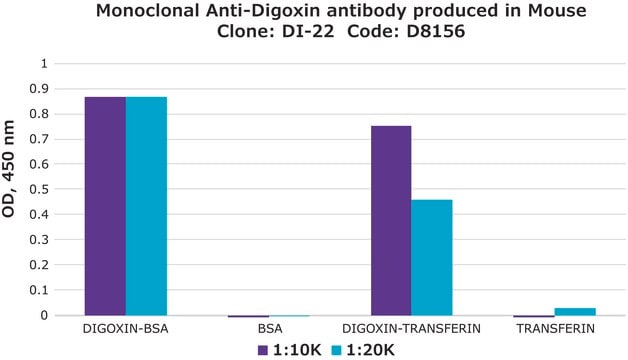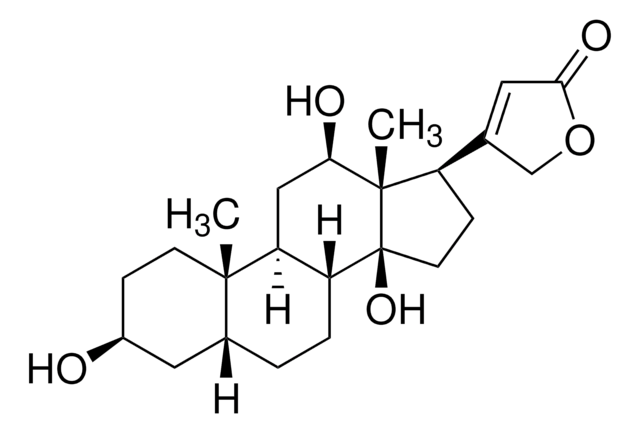11214667001
Roche
Anti-Digoxigenin, Fab fragments
from sheep
Synonym(s):
anti-digoxigenin, digoxigenin
About This Item
Recommended Products
biological source
sheep
Quality Level
conjugate
unconjugated
antibody form
affinity purified immunoglobulin
antibody product type
primary antibodies
clone
polyclonal
form
lyophilized
packaging
pkg of 1 mg
manufacturer/tradename
Roche
technique(s)
ELISA: 2-4 μg/mL
immunohistochemistry: 0.5-1 μg/mL
western blot: 0.5-2 μg/mL
isotype
IgG1
storage temp.
2-8°C
Related Categories
General description
Specificity
Application
Use Anti-Digoxigenin, Fab fragments for the detection of digoxigenin-labeled compounds using:
- ELISA
- Immunohistocytochemistry
- In situ hybridization
- Western blot
- Flow cell construction.
Features and Benefits
Sequence
Preparation Note
- ELISA: 2 to 4 μg/ml
- Immunohistocytochemistry: 0.5 to 1 μg/ml
- In situ hybridization: 0.2 to 0.4 μg/ml
- Western blot: 0.5 to 2 μg/ml
Storage conditions (working solution): Diluted antibody is stable at 2 to 8 °C for 12 hours.
Always prepare freshly!
Reconstitution
Analysis Note
Other Notes
Not finding the right product?
Try our Product Selector Tool.
Storage Class Code
11 - Combustible Solids
WGK
WGK 1
Flash Point(F)
does not flash
Flash Point(C)
does not flash
Certificates of Analysis (COA)
Search for Certificates of Analysis (COA) by entering the products Lot/Batch Number. Lot and Batch Numbers can be found on a product’s label following the words ‘Lot’ or ‘Batch’.
Already Own This Product?
Find documentation for the products that you have recently purchased in the Document Library.
Customers Also Viewed
Articles
Digoxigenin (DIG) labeling methods and kits for DNA and RNA DIG probes, random primed DNA labeling, nick translation labeling, 5’ and 3’ oligonucleotide end-labeling.
Our team of scientists has experience in all areas of research including Life Science, Material Science, Chemical Synthesis, Chromatography, Analytical and many others.
Contact Technical Service









